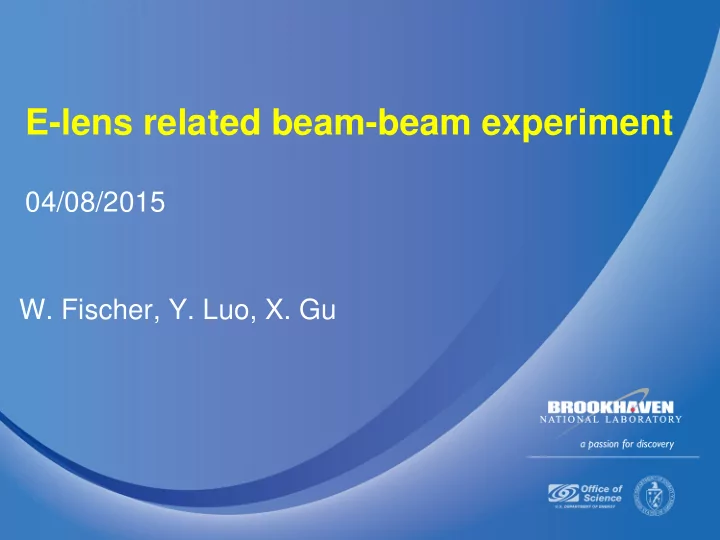

E-lens related beam-beam experiment 04/08/2015 W. Fischer, Y. Luo, X. Gu
APEX 04/08/2015 1. BTF: different beam size and different beam current 2. BTF: Octupole 3. BTF: Different e-beam energy 4. BTF: 1D separation 5. Three 111x111 ramps 2
3
4
5
6
7
8
Tune vs Current 0.00203 0.00171 0.00145 0.00125 Per / 100 mA 9
10
In operation we used 400 mA current in the e-lenses. The 1st ramp (lost) had 600 mA, and no changes to the tune set points. It also had an angle change in one of the the Yellow snake. The 2nd ramp (lost) had 600 mA, and a reduction of all store tunes by 0.001. The Yellow orbit change was taken out. The 3rd ramp (successful) had 500 mA, and a reduction of all store tunes by 0.001. The Yellow orbit change was still out. No emittance blow-up when going into collision. Initial luminosity was 110x1030cm-2s-1 (good but not higher than the best stores). 11
Conclusions: For more e-lens current we need to compensate the linear tune shift completely (from the current starting point). We could transfer the 500 mA and corresponding tune changes to operation. For 600 mA we would need another reduction of 0.001 in all planes at store, etc. Better collimation after the PHENIX collisions are established would make us less sensitive to the losses when bringing STAR and the e-lenses into collision. Giulio from Tevatron experience: one could also scrape off the halo before going into collision. 12
Recommend
More recommend